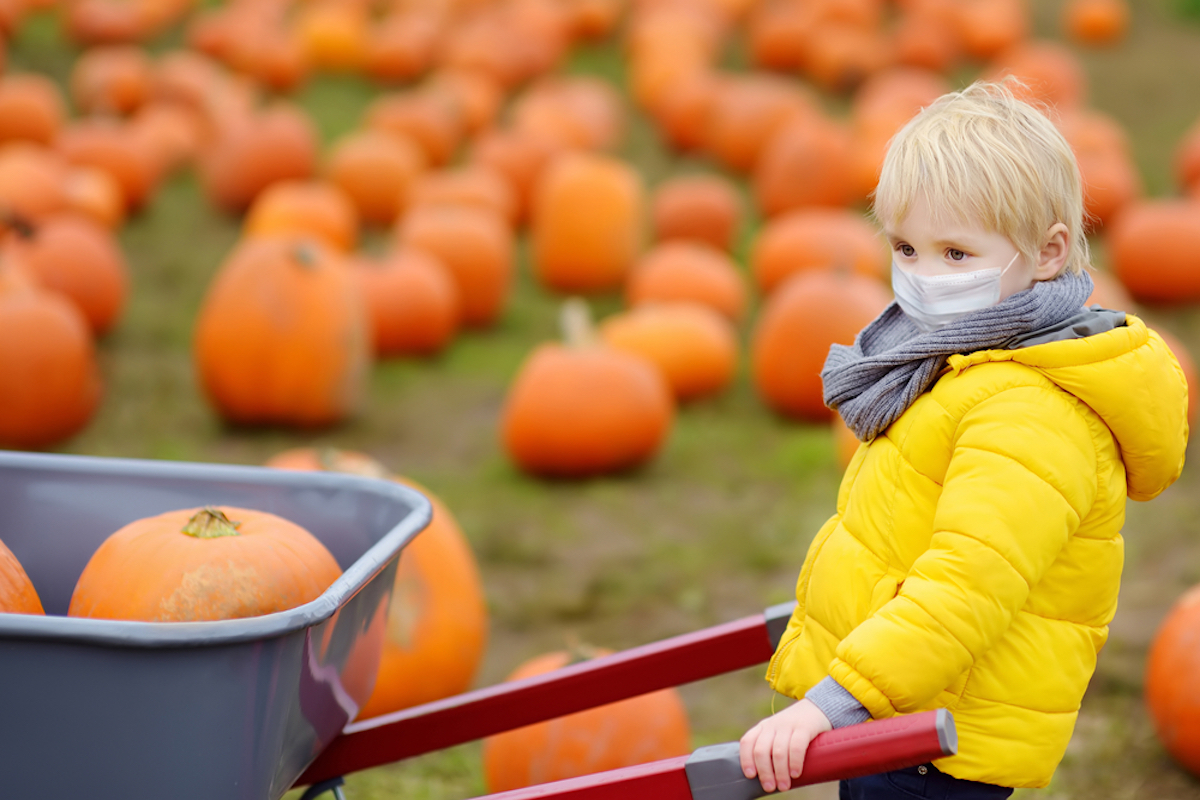The Oct. 15 study, conducted by the Department of Defense in partnership with United Airlines, found that the risk of coronavirus exposure on airplanes is “virtually non-existent” when masks are worn. The researchers ran more than 300 tests on United planes using a mannequin that was equipped with an aerosol generator that reproduced breathing and coughing. In each test, 180 million particles were released into the cabin air—which is similar to the amount that would be produced by thousands of coughs. Researchers found that “aerosol exposure risk is minimal even during long duration flights.” For flights 12 hours and under, the researchers said that it was “extremely unlikely” for an infected passenger to transmit particles that could break through another passenger’s breathing area when all parties were continuously wearing masks. Even for a passenger sitting right next to you, there is only a 0.003 percent chance of infected particles entering your breathing space. “99.99 percent of those particles left the interior of the aircraft within six minutes,” United Airlines Chief Communication Officer Josh Earnest told ABC News. “It indicates that being on board an aircraft is the safest indoor public space because of the unique configuration inside an aircraft that includes aggressive ventilation, lots of airflow.” It’s true that the ventilation conditions on airplanes aren’t conducive to viral spread. “The air quality on a commercial airliner is actually quite high, with the air volume in the cabin being completely refreshed every two to four minutes,” explains Kim Schive, editor at the Massachusetts Institute of Technology (MIT). “Air flows into the cabin vertically—it enters from overhead vents and is sent downward in a circular motion, exiting at floor level. Once air leaves the cabin, about half is dumped outside, and the rest is sent through HEPA (high-efficiency particulate air) filters, similar to those used in hospitals, before being mixed with fresh outside air and entering the cabin again.” These HEPA filters capture 99.97 percent of airborne particles. And, as Schive points out, the air on a plane is completely changed over dozens of times per hour, raising the air quality high above that of a normal building. Supplemental data also appears to back up this new research from the Department of Defense and United. In September, various U.S. airline CEOs reported that their employees had lower rates of COVID infection than the general public. “At United, but also at our large competitors, our flight attendants have lower COVID infection rates than the general population, which is one of multiple data points that speaks to the safety on board airplanes,” United Airlines CEO Scott Kirby said during a Politico event, as reported by ABC News.ae0fcc31ae342fd3a1346ebb1f342fcb Additionally, according to a July paper from researchers at MIT, the chances you’ll contract COVID-19 on a plane in which every coach seat is filled are approximately 1 in 4,300. The International Air Transport Association (IATA) also released a report on Oct. 8 that said that the risk of contracting COVID on a plane appeared to be “in the same category as being struck by lightning.” Out of 1.2 billion travelers, the IATA found only 44 reported cases of potential inflight transmission, and most occurred early in the pandemic before masks were required. So while many have canceled plans for fear of coronavirus transmission on airplanes, it may not be all that risky. Still, the CDC notes that there is some risk that comes with spending time in security lines and airport terminals before you get on a flight. But traveling on a plane itself is actually low risk. For more low-risk activities, read on, and for additional virus news you may have missed, know that If You Can’t Smell These 2 Things, You May Have COVID. According to Johns Hopkins Medicine, walking outdoors is a low-risk activity in terms of COVID spread. In fact, experts say that any kind of exercising outside is “generally safe,” including jogging or bike riding. You should just make sure to maintain at least six feet of distance when others are nearby or need to pass. And for more precautions you can take right now, check out the 50 Essential COVID Safety Tips the CDC Wants You to Know. Even though many states have reopened both outdoor and indoor dining, the safest way to dine at your favorite restaurant right now is still through takeout. According to the CDC, the risk of getting COVID from a takeout or drive-thru meal is pretty low. After all, they say “there is no evidence that food is associated with spreading the virus that causes COVID-19.” And if you are going to dine out, know that This Is the Worst Place to Sit at a Restaurant Right Now, Study Finds. Meeting friends outside for a gathering is a safer way to see people during the pandemic. According to John Hopkins, as long as everyone brings their “own blanket, food and utensils and maintains physical distancing,” an outdoor picnic with friends or family is generally safe. And for more ways to stay safe with others, check out The No. 1 Worst Thing You Can Do When Visiting Someone Right Now. Americans love fall activities, but a lot of the ways we traditionally celebrate autumnal holidays aren’t all that safe. According to the CDC, visiting fall markets, pumpkin patches, or orchards is not too risky of an activity. They recommend that people only visit markets that enforce mask-wearing, social distancing, and the use of hand sanitizer before touching anything, however. And for more useful content delivered straight to your inbox, sign up for our daily newsletter.




